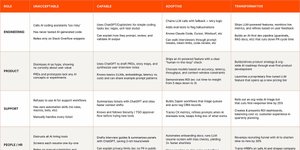
The AI-First Company: How to Compete and Win with Artificial Intelligence


The Future of Work: Attract New Talent, Build Better Leaders, and Create a Competitive Organization
amazon.com

Quantum Progression: The Art & Science of Career Advancement in the Age of A.I.
amazon.com
Embed Personalization in Your Corporate Development Agenda